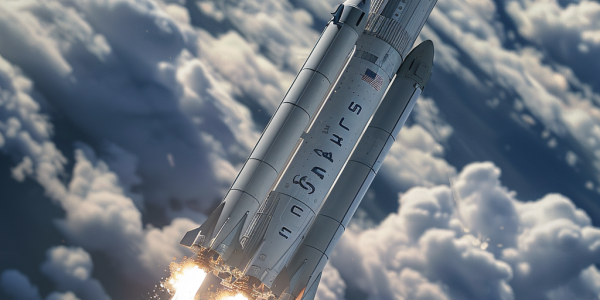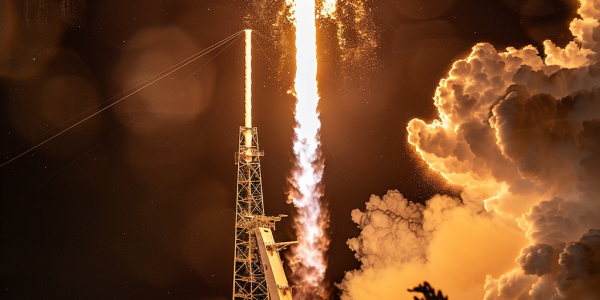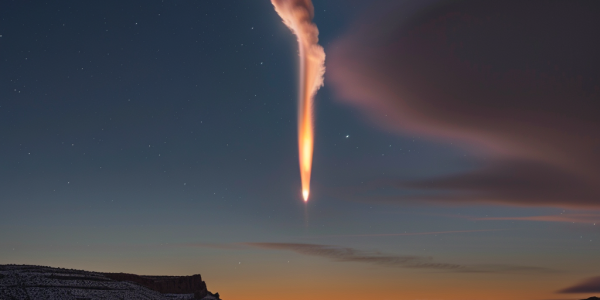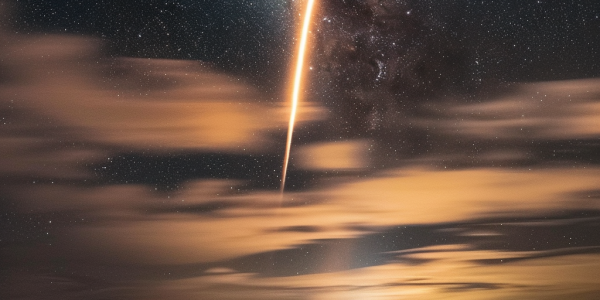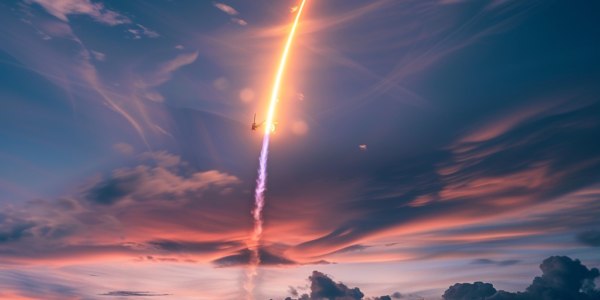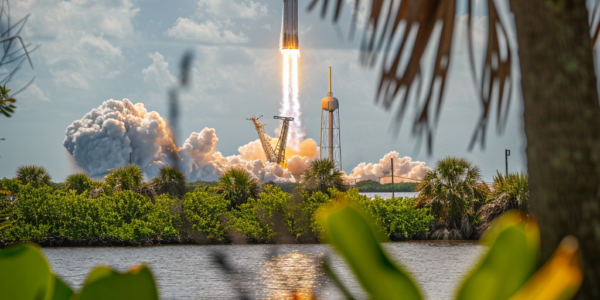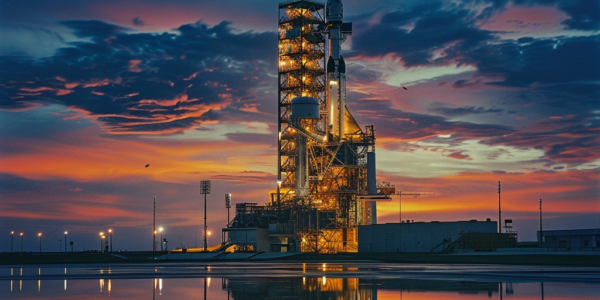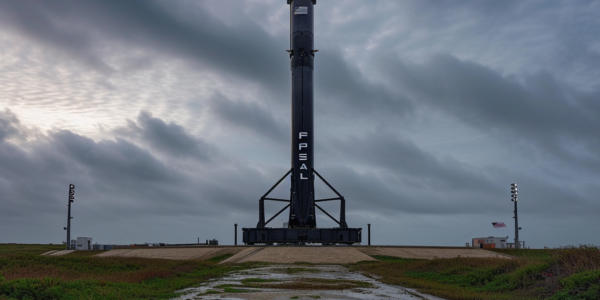U.S. Space Force selects Blue Origin, SpaceX, and United Launch Alliance for National Security Space Launch Phase 3 program
Blue Origin, SpaceX, and United Launch Alliance have been chosen by the U.S. Space Force for the National Security Space Launch Phase 3 program, with contracts potentially valued at $5.6 billion over the next five years. This milestone marks the first time Blue Origin will launch sensitive national security satellites, while SpaceX and United Launch Alliance have previously held Phase 2 contracts. The NSSL Phase 3 program includes two lanes for different types of missions, with Lane 1 focusing on less demanding launches to low Earth orbit. The selection of these three companies confirms their capabilities met the specified criteria, as revealed by the Department of Defense’s announcement.
SpaceX Launches 20 Starlink Satellites on Falcon 9 Rocket Milestone
SpaceX celebrates a milestone with the launch of 20 Starlink satellites, marking the 14th anniversary of the first Falcon 9 launch. The Falcon 9 booster completed its 20th flight, landing successfully on the SpaceX droneship ‘Just Read the Instructions.’ With plans to reduce Starlink Internet latency, SpaceX is making strides in expanding global connectivity through initiatives like the Starlink project.
SpaceX Falcon 9 Rocket Launch Could Create ‘Space Jellyfish’ Phenomenon Visible from Southern Utah
The scheduled launch of a SpaceX Falcon 9 rocket from California may create a ‘space jellyfish’ phenomenon visible from Southern Utah. The rocket carrying Starlink internet satellites could produce a bright, jellyfish-like glow in the sky, with colors ranging from white to orange or pink. Viewers in Utah, Nevada, and Arizona might witness this effect, with the launch trajectory at a 53-degree, southeastern angle. Spectators in Southern Utah can expect to see the rocket streak in the southwest approximately a minute and 30 seconds after launch.
SpaceX Falcon 9 Launch Delayed, ‘Space Jellyfish’ Phenomenon Unlikely
Learn about the delayed SpaceX Falcon 9 rocket launch from California and the potential to witness a ‘space jellyfish’ visual phenomenon. The rocket, carrying Starlink internet satellites, was rescheduled for Thursday evening. Although viewers in Southern Utah may have a chance to see the launch, the ‘space jellyfish’ effect is not expected. Stay updated for more information on the rescheduled launch.
SpaceX Achieves Milestone with 300th Booster Landing
The last week of April was filled with significant events in the space industry, including SpaceX’s 300th booster landing and China’s Shenzhou 18 mission to the Tiangong space station. SpaceX’s high launch cadence has contributed to a significant increase in orbital launches this year, with exciting developments and milestones on the horizon for space exploration.
SpaceX Launches Doubleheader Falcon 9 Rocket Mission
SpaceX successfully launched a doubleheader Falcon 9 rocket mission to deploy satellites and expand its Starlink constellation, with one launch carrying the Eutelsat 36D satellite and the other launching 23 Starlink satellites. Weather conditions forced the postponement of a third SpaceX launch in California. Despite the challenges, SpaceX’s ambitious launch schedule and successful missions demonstrate the company’s commitment to advancing satellite deployment and space exploration.
Space Coast Sets New Record for Orbital Missions in 2023
The Space Coast in Florida has set a new record for orbital missions in 2023, with a total of 72 launches from both Kennedy Space Center and Cape Canaveral Space Force Station. The pace of launches is expected to increase significantly by the end of 2024, potentially reaching a rate of nearly twice weekly, with as many as 111 missions being possible. As of March 30, 2024, there have been 22 Space Coast launches, with 15 from Cape Canaveral and 7 from KSC. Of these, 21 were conducted by SpaceX (comprising 21 Falcon 9s) and 1 by ULA (utilizing 1 Vulcan). Additionally, there have been 2 human spaceflight missions: Ax-3 and Crew-8.
NASA and SpaceX Delay Crew-8 Mission to Avoid Conflict with IM-1 Lunar Lander Launch
NASA and SpaceX have announced a delay in the launch of the four-person Dragon Crew-8 mission to the International Space Station (ISS) from February 22 to no earlier than February 28 to avoid potential conflict with the launch of Intuitive Machines’ IM-1 lunar lander mission. The Crew-8 Dragon Endeavour launch date will be reassessed following a successful launch of the IM-1 lunar lander, and it could be subject to further changes. This delay is part of ongoing efforts to ensure the safety and success of space missions amidst increasing interest and activity in space exploration.
SpaceX Scrubs Starlink Mission for Third Time Due to Poor Weather Conditions
SpaceX has had to scrub the Starlink mission for the third time this week due to poor weather conditions. The next available launch opportunity is scheduled for Wednesday, Feb. 7, at 5:17 p.m. PST. If successful, this will be the 82nd landing on the SpaceX droneship, ‘Of Course I Still Love You,’ which is staged out in the Pacific Ocean. The mission was announced after strong ground winds forced SpaceX and NASA to stand down from attempting to launch NASA’s PACE mission from Cape Canaveral Space Force Station. If the Starlink 7-13 launch is successful, it will mark several milestones for SpaceX including the 65th SpaceX launch from SLC-4E, 133rd orbital launch from SLC-4E, 296th Falcon 9 launch, and the 270th Falcon 9 booster landing.
SpaceX Gearing Up for Another Rocket Launch from Cape Canaveral
SpaceX is gearing up for another rocket launch from Cape Canaveral, with plans to launch 23 Starlink satellites to low-Earth orbit from Launch Complex 39A at NASA’s Kennedy Space Center. The company has announced that the launch is scheduled for…

